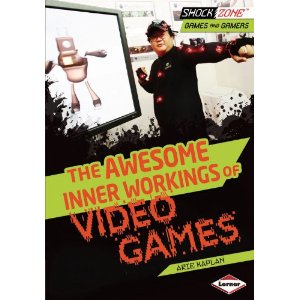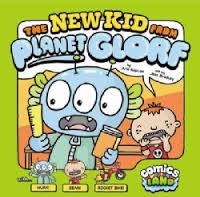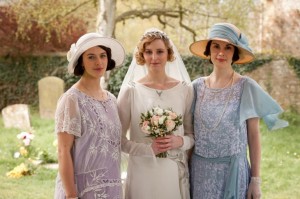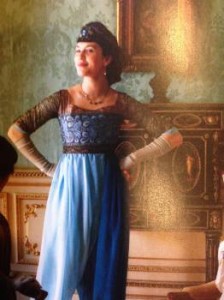Interview: Author, Game Creator, History Buff Arie Kaplan
Posted on March 10, 2014 at 10:58 pm
The multi-talented Arie Kaplan (From Krakow to Krypton: Jews and Comic Books)graciously took time to answer my questions about his latest projects. He wrote the story, dialogue, and in-game fiction for the new videogame PARANORMAL STATE: POISON SPRING (based on the A&E series PARANORMAL STATE), which is out now from Legacy Games. It involved quite a bit of research on subjects like Native American folklore and the American Civil War. There’s also a character in the game who’s loosely based on legendary pulp novelist Walter B. Gibson, creator of The Shadow. He also wrote a 6-volume series of Young Adult nonfiction books about the video game industry (the SHOCKZONE “GAMES & GAMERS” series), and those books are out now from Lerner Publishing Group. And THE NEW KID FROM PLANET GLORF, the children’s graphic novel that he wrote for Capstone, is now a best-seller.

How is writing the narrative and dialogue for a game different from writing a linear work like a novel?
There are similarities and differences. One of the similarities is that videogames and novels both involve things like structure, plot, character development, and dialogue. In writing the script for a videogame (sometimes called a “game script”), you try your hardest to make sure the characters are well fleshed out, relatable, and compelling. That’s also true of writing a novel, a comic book script, a play, a screenplay, a TV script, or anything else really. And the plot of a videogame might not be that different from that of a novel. There are some differences though, like the fact that videogames involve multiple story paths and branching dialogue. Of course, there are books (like the “Choose Your Own Adventure” series of children’s books, and other interactive books) that also offer multiple story paths. But most books don’t work that way; most novels progress in a linear fashion, and they don’t give you multiple options as to how the story might progress or end. So that’s a pretty big difference. Also, in some videogames, the writer is brought in on the ground floor, at the very start of the development process. In that case, the writer works from the very beginning with the designers, producers, and so on to build the game from scratch, to craft the story and the characters and the narrative. In other cases, on other games, the writer is brought in part-way through the development or production process; concept drawings have already been drawn up, storyboards have already been created, game design documents have been created, and everyone already has a very clear idea of where the story will be going and who the characters will be. In those cases, the writer’s involvement is still very important, but the writer is jumping in to a partially-formed world at that point. I’ve been involved in both situations. I’ve worked on some games where I was involved from the very beginning, and on others where they’ve come to me and said, “This is what the overarching story is going to be, here are some drawings of the characters, and we need a writer to flesh the characters out and write dialogue for them and fully shape the plot and the narrative.” In both situations, it’s quite a bit of fun and very creatively rewarding. And it’s always a collaborative art, creating a videogame, and it involves many people working together. Which is always fun. In that way it’s also very different from – say – prose fiction, where it’s just one person staring at a laptop screen.
I know you love to do historical research. Where did you begin in researching the Paranormal State: Poison Spring game and what did you discover that surprised you?
I wrote the story, dialogue, and in-game fiction for the Paranormal State: Poison Spring videogame. When I was working on the game, early on I had many discussions with the game designers and the game producers at Legacy Games. We talked about how this was going to be a game where the Paranormal Research team (from the hit A&E TV show Paranormal State) is called in to investigate mysterious supernatural events that are occurring at Poison Spring State Park. Now, Poison Spring State Park is an actual park that exists in real life. And in real life, as in the videogame, Poison Spring State Park was a Civil War battleground during the 1860s. And so – in the Paranormal State: Poison Spring game – we had ghosts from the 1860s haunting the park. This meant that I had to do quite a lot of research on the American Civil War. The park was also built on a piece of land where Native Americans used to live. There was going to be a demon from Native American folklore involved in the game. So I then went off and did research; which exact Native American tribes lived in that particular region (the area where Poison Spring State Park now stands), and which tribes had folklore that involved demons? The answer to both questions was the Cherokee. I researched a particularly gruesome monster from Cherokee folklore called the “Iron Finger Demon,” which I believe we re-named “Spear Hand” in the last draft of the script. I guess one of the things that surprised me the most was that normally, when we think of a demon, it’s the very Eurocentric type of demon, the kind we might see in most horror movies. That derives largely from European folklore, and the European concept of a demon is often tied – in some way – to Lucifer. To the devil. Not that there’s anything wrong with that. But Native American demons are a bit different; they’re more tied to nature and the elements than European demons. So that made me write Spear Hand’s dialogue a bit differently than I would if I was writing dialogue for a European demon, and it made me think about demons and monsters in a slightly different way. Which was really cool. Anything that gives you a fresh take on things is cool. I also did a LOT of research on exorcism rituals of various kinds while writing the game script, and that was pretty fascinating.
Roger Ebert famously created a lot of controversy by saying that a game could not be an art form. Was he right?
I remember reading about that. Roger Ebert was a great critic. But he was just plain wrong in that regard. It’s not very forward-thinking of him to say that. OF COURSE a video game can be an art form. Most videogames ARE art, and I have a tough time NOT considering them as art. Animation is an art. Writing is an art. Conceptual design is an art. Narrative design is an art. Graphic design is an art. Sound design is an art. Acting is an art. If a videogame involves any or all of these arts, how is that videogame NOT art? I think that a decade or two down the line, people will look back and think it’s quaint and funny that anyone ever doubted whether a videogame could be an art form. Sort of the same way that in the 1950s, many people doubted that rock & roll music could ever be viewed as a legitimate musical genre. They thought that rock & roll was just a fad, and that there would never be any great rock & roll songs, there would never be any classic rock & roll songs. Well, now we chuckle at how short-sighted that sort of mindset was. It’s the same with videogames: they’re definitely an art form, and I can’t believe there are still people out there who can’t see that.
How did you first become interested in Native American folklore and where do you find the resources to research it?
I have many books on folklore and mythology in general, and these books cover myths and legends from all over the world, including those that pertain to various Native American tribes. But I also found various online resources that I used for research while writing the game script for Paranormal State: Poison Spring.
You wrote a 6-volume series of Young Adult nonfiction books about the videogame industry. It’s called the Games & Gamers series (2013, Lerner Publishing Group). What inspired you to write about gamers and the gaming industry?
I thought it was a bit odd that there are so few books for young readers that explain exactly what a game writer does, what a game designer does, what an animator does, what a combat designer does, etc. The Crazy Careers Of Video Game Designers (one of the Games & Gamers books) answers all of those questions…and then some. And it explains what it’s like to work in the video game industry. Also, there aren’t a lot of books out there for kids or pre-teens about the history of videogames, so that’s why I wrote The Epic Evolution of Video Games (also one of the Games & Gamers books). And there aren’t exactly a ton of books that talk about the pioneering figures in gaming history. Who are the designers, programmers, writers, and animators who created the Super Mario games, the Pokemon games, the BioShock games, and so on? That’s why I wrote The Biggest Names Of Video Games (another of the Games & Gamers books). I think we’re coming to a point in our collective history where we’re finally starting to realize that it’s important to honor those who created our great pop cultural touchstones. That when you play a videogame, people worked really hard to bring that game to life, and you should know who those people are. Shigeru Miyamoto created Donkey Kong, Super Mario Brothers, and The Legend of Zelda. Kids should know who he is, because even if they haven’t played one of his games, they’ve probably played a game that was influenced by one of his games. That’s why I think that it was so important to write the Games & Gamers books.
How have advances in technology affected gaming?
They have affected gaming in so many ways. Here’s one of the most basic ways: When the first videogames were created for the mass market, in the early ‘70s, the “characters” were just dots and blips on a screen. You couldn’t have a character who showed any emotion, who spoke dialogue, and there was no need for writers. I mean, who are the characters in Pong? What’s the plot of Pong? I doubt you needed a character artist or a combat designer on Pong, either. But I’ve wasted enough time ridiculing Pong. The point is, in the late 1890s and early 1900s, the first movies were just five-second-long shots of a train racing towards the screen or a horse galloping. And audiences at the time were AMAZED by that. They’d never seen anything like it! They ran out of the theater, for fear that the train would burst out of the screen and flatten them! And when the first videogames hit arcades in the ‘70s, people had never seen anything like THEM, either. But as technology has advanced over the past 40 years, we were able to create videogames that allow for longer, more complex, and more immersive gameplay, with infinitely better graphics, animation, and sound, and more intricate stories and more interesting characters. So it allows everyone involved in making the game to get more and more ambitious, and to try to really push the envelope and to give the player an unforgettable experience. I mean, when I played the first BioShock game, it had some of the most disturbing imagery I’d seen in a game in a long time. And it was creepier than most horror movies. But you sure wouldn’t have been able to create that kind of disturbing, addictive, emotionally involving game with the technology available in the ‘70s.
Are games more like books, comics, or movies or an entirely new kind of story-telling?
A bit of both, really. They meld aspects of books, comics, theater, movies, TV, and even radio. But they’re also a relatively new kind of storytelling, compared to all those others that I just listed. They’re immersive and interactive in a way that film, for example, is not. So we’re still just figuring out what a game can do. Can a videogame move a player to tears just like a film can move a viewer to tears? Absolutely. But we’re just starting to see how moving and emotionally involving and immersive a videogame can be, and what that means for gaming specifically.

You wrote the children’s graphic novel The New Kid From Planet Glorf (2013, Capstone). Where did you get the idea for the book?
I wanted to write a graphic novel for kids that was about friendship and the universality of being a kid. The fact that even if you’re a kid who lives on another planet, you’re still a kid, and you still have the same fundamental wants and needs as a kid on Earth. And how that applies to real life is, if you’re a young child and you see another child who looks different than you, you should know that he’s still a child with the same wants and needs as you. Looks are such a superficial thing, and a kid is a kid is a kid, whether he’s a kid from Glorf with three eyes and antennae, or an Earth kid with two eyes and no antennae. That’s the message I wanted to impart with this book. There’s a scene in the graphic novel where Nurk (the kid from Glorf) first meets Sean, a kid from Earth. And they both point at each other and say, “Whoa! An alien!” Then Sean says, “What do you mean? I’m not an alien.” And Nurk says, “Well, no one looks like you where I come from. You would be an alien there.” And that’s the point: we’d probably look as strange to people from Glorf as they look to us. Also, The New Kid From Planet Glorf is drawn in such a fun, cartoony way, which is a testament to the work of the book’s illustrator, Jess Bradley, who’s wonderful. But I definitely wanted the aliens in the book to have a “classic sci-fi” look, inspired by movies like Forbidden Planet (1956) and Flash Gordon (1980), and there were references to those movies in the script’s stage directions. In the script, I described the inhabitants of Glorf as having green skin and antennae, because I wanted them to have a “classic alien” look, as opposed to a “Roswell” alien look. When I was at NYU studying playwriting, I wrote a trilogy of stage plays set on Mars, and the Martians in my plays had a similar “little green people” aesthetic. But those stage plays were definitely written more for adults. So in a way, The New Kid From Planet Glorf is sort of a more kid-friendly version of those plays. For some reason, I like parodying the type of alien you used to see in 1950s sci-fi movies.
Who is the ideal audience for the book?
I think 5-7 year old kids are the ideal audience for The New Kid From Planet Glorf, but hopefully parents can enjoy it as well.
If you visited another planet, what would be your first question?
Hmm…that’s an interesting question! I think ANY question you asked an alien would be equally important, because their reaction to it would be very telling. I mean, who or what are the inhabitants on this other planet anyway? Are they little green people, like in The New Kid From Planet Glorf? Do they look like little bits of algae or floating orbs of light? Do they look exactly like we do, but with little teacups on their heads? In that case, I’d ask, “So, what’s with the teacups?” The answer to that question would probably have tremendous consequences for the future of the galaxy. Or maybe not. Maybe they’d just say, “We like teacups. They make nice hats.” And that would be that.
How do you create the mindset of someone who is completely unfamiliar with Earth?
I just tried to think about all of the things that we take for granted. Nurk is obviously educated, but he doesn’t know what books are. They probably have a very different way of educating children on Glorf. And he doesn’t know what whiteboard erasers are, because they probably don’t have whiteboards on Glorf. So, what does Nurk have in common with Earth kids? He wants the same things that they do: love, respect, compassion, the freedom to express oneself. But many of the creature comforts that we have on this planet probably don’t exist on Glorf, and it was fun thinking about that.


